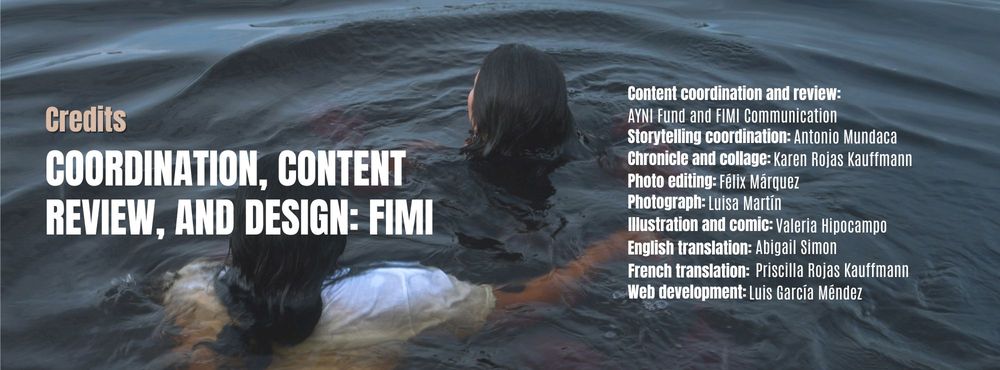The Amazons of the Land of Rivers
ColombiaClemencia Herrera Nemerayema


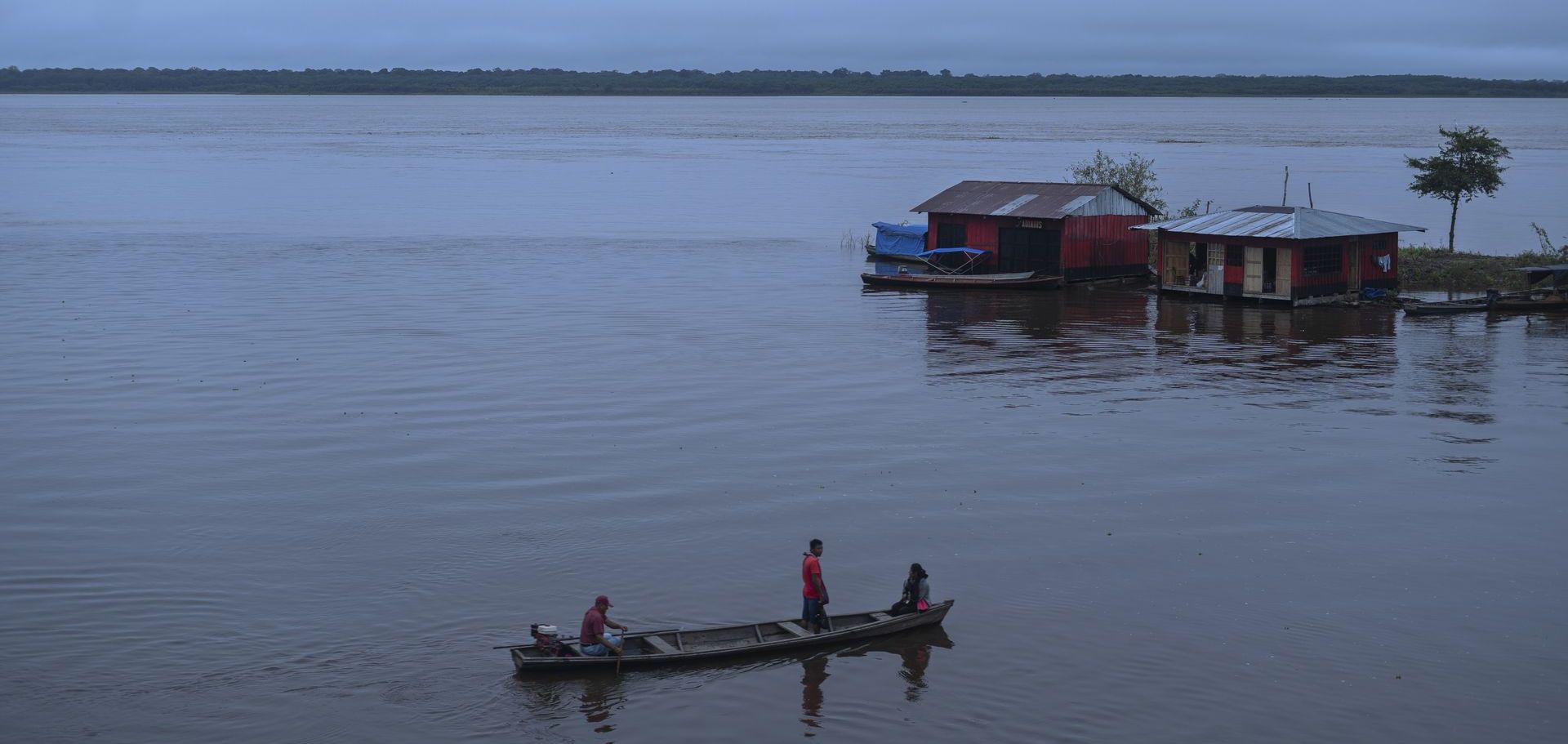
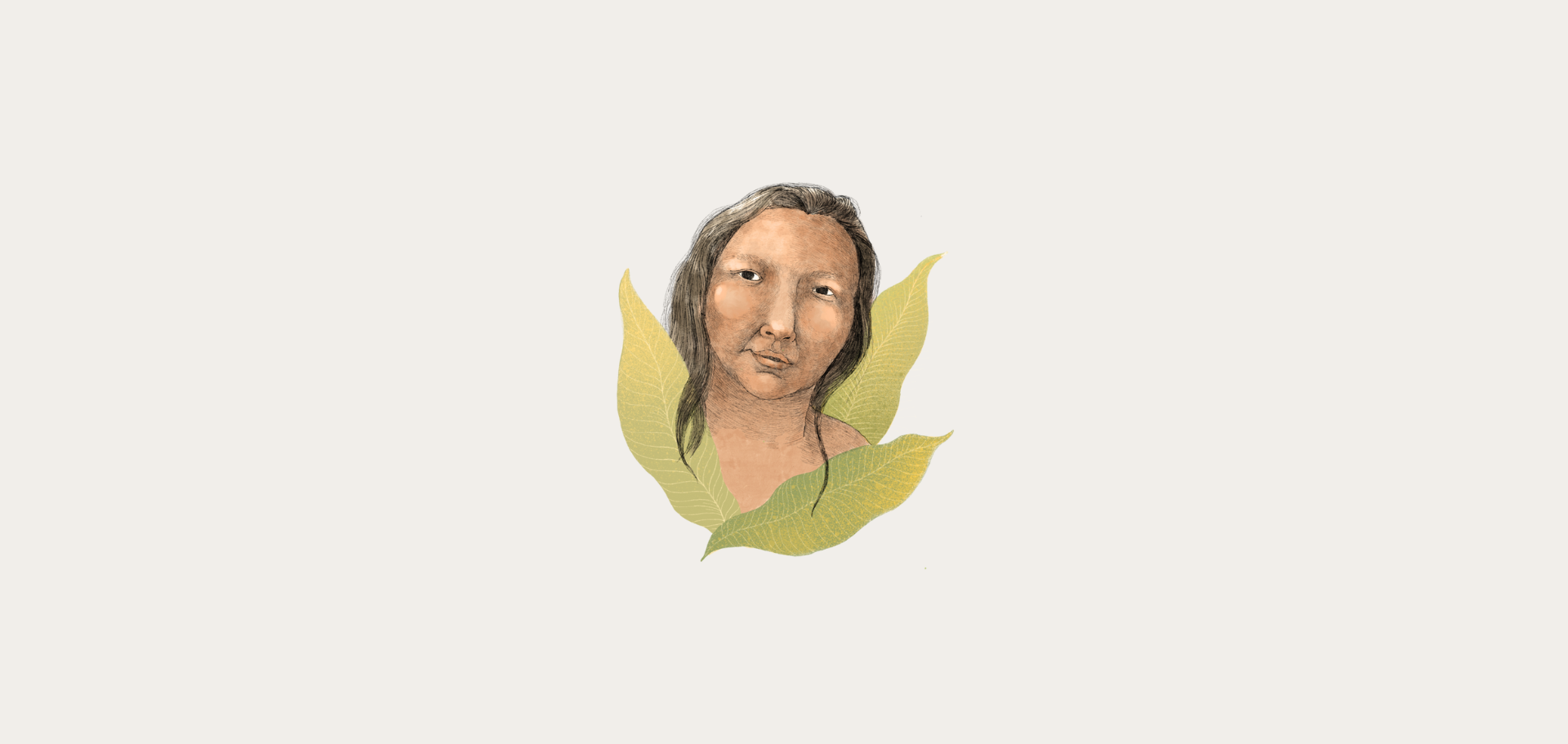
The Corporación Cultural, Ecológica Mujer, Tejer y Saberes (Mutesa), is an organization established in 2004 to empower Indigenous women in Colombia, victims of forced displacement and gender-based violence, and to promote educational opportunities and productive initiatives based on the knowledge and ancestral memory of the Amazonian peoples.
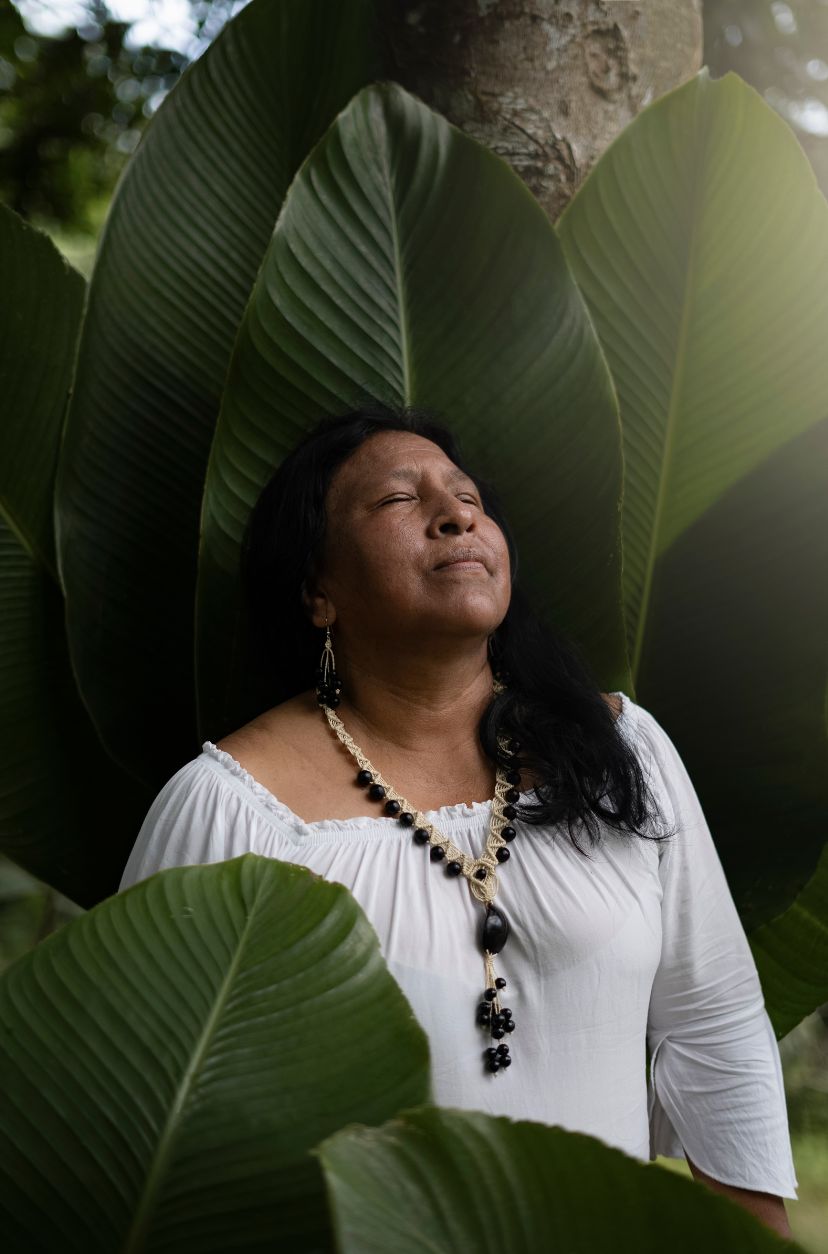
Clemencia looks intently into the fog. As the boat advances, a faint light flickers through the leaves of the trees. She travels on an old, narrow wooden boat from Leticia to Nazareth, a small community with 956 inhabitants from the Tikuna, Uitoto and Kocama peoples, located 25 kilometers inland. Before melting away into the water, a light drizzle falls.
María Clemencia Herrera Nemerayema knows the invisible spirits that live among the forests. She is a bearer of the knowledge of the jungle and a spiritual leader of the Uitoto people. Since before she was 20, she has been the voice of Amazonian Indigenous women to the world.
Murui-Muinane indigenous community, Uitoto
The Amazon is a serpentine biome of almost eight million square kilometers. Seen from the air, the rainforest undulates beneath the clouds. When the water reaches the highest part, the combination of sun and wind turns it into a mighty river, a river of clouds flowing over eight countries through which the river basin extends, shyly obscuring all that crosses its path: giant ceibas, swamps with mysterious voices, creatures from wild roots.
Before the colonial invasion, neither the river nor the rainforest had a name. Then came the first expeditions and in 1541, after a bloody battle with a group of women warriors, Francisco de Orellana baptized the lands and extensive waters of the Amazon River.
The word may derive from the Iranian ha-maz-an, meaning ‘to fight together,’ or more specifically the Greek Amazōn, a-mastos, meaning ‘without breast’, because it was believed that these untamed women cut off their right breast in order to better handle a bow. The fact is that the Amazons were sovereign, nomadic and free women.




María Clemencia Herrera Nemerayema descends from this lineage of women who fought to defend themselves on the margins of an imperial system. An indigenous defender of the Murui Muina, originally from La Chorrera, a community located in the Igara Paraná River basin, with a long history of violence, pain and dispossession of their territories.
An Open Wound at the Heart of the Colombian Amazon
The Murui Muina or Uitoto, as they were called during colonial times, are one of the largest indigenous communities to inhabit the Amazon rainforest. Children of tobacco, coca and sweet yuca, guardians of nature and the spirits of the rainforest, they managed to remain isolated from State control and assistance until the beginning of the 20th century. As Clemencia remembers it, their history is marked by the years of rubber extraction, which also almost exterminated the Bora, Muinane and Okaina peoples. This was a fateful period in the rainforest. For more than three decades starting in 1879, they tortured and enslaved 100 thousand indigenous Amazonians to the point of decimating them, all in order to exploit the wild rubber.
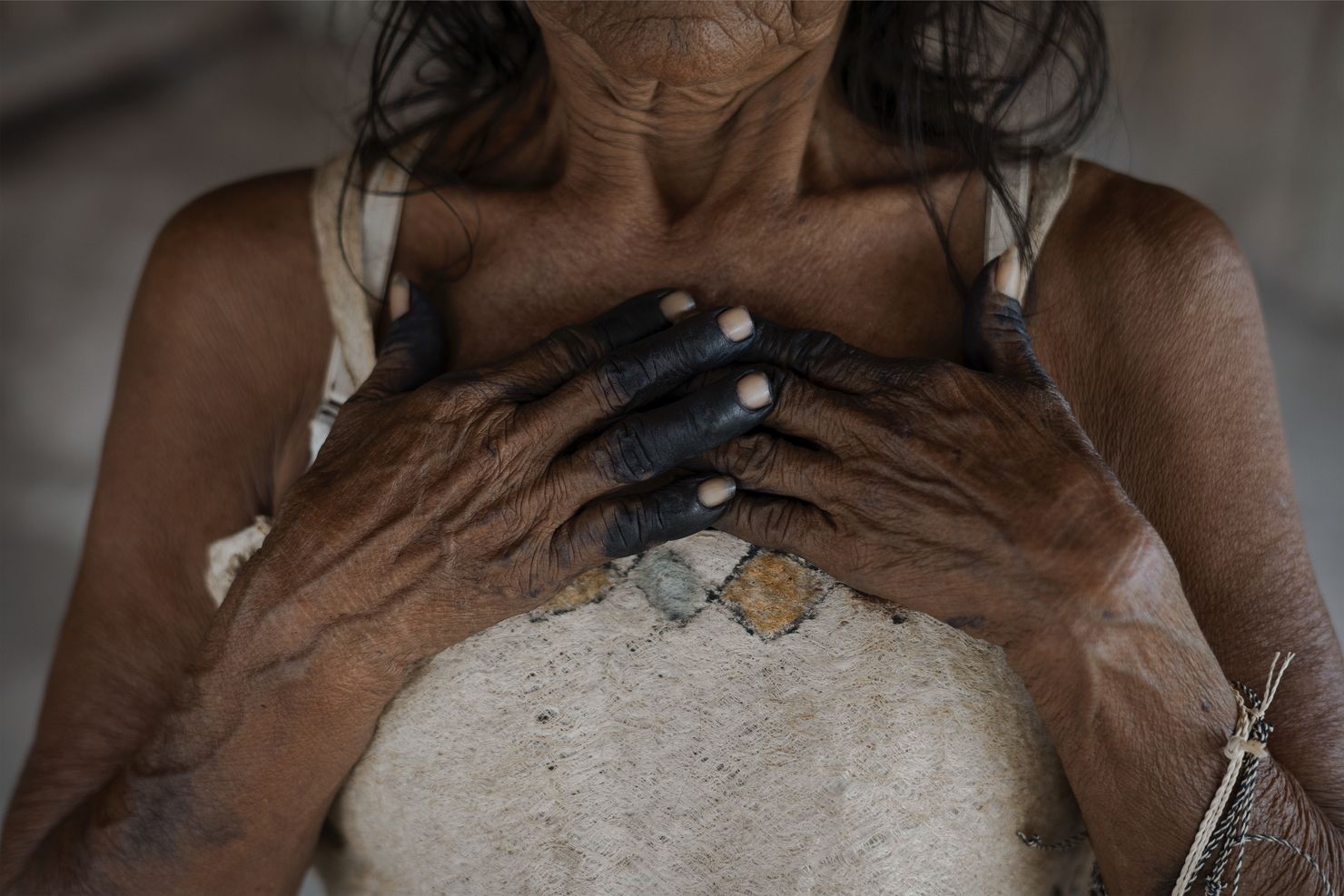
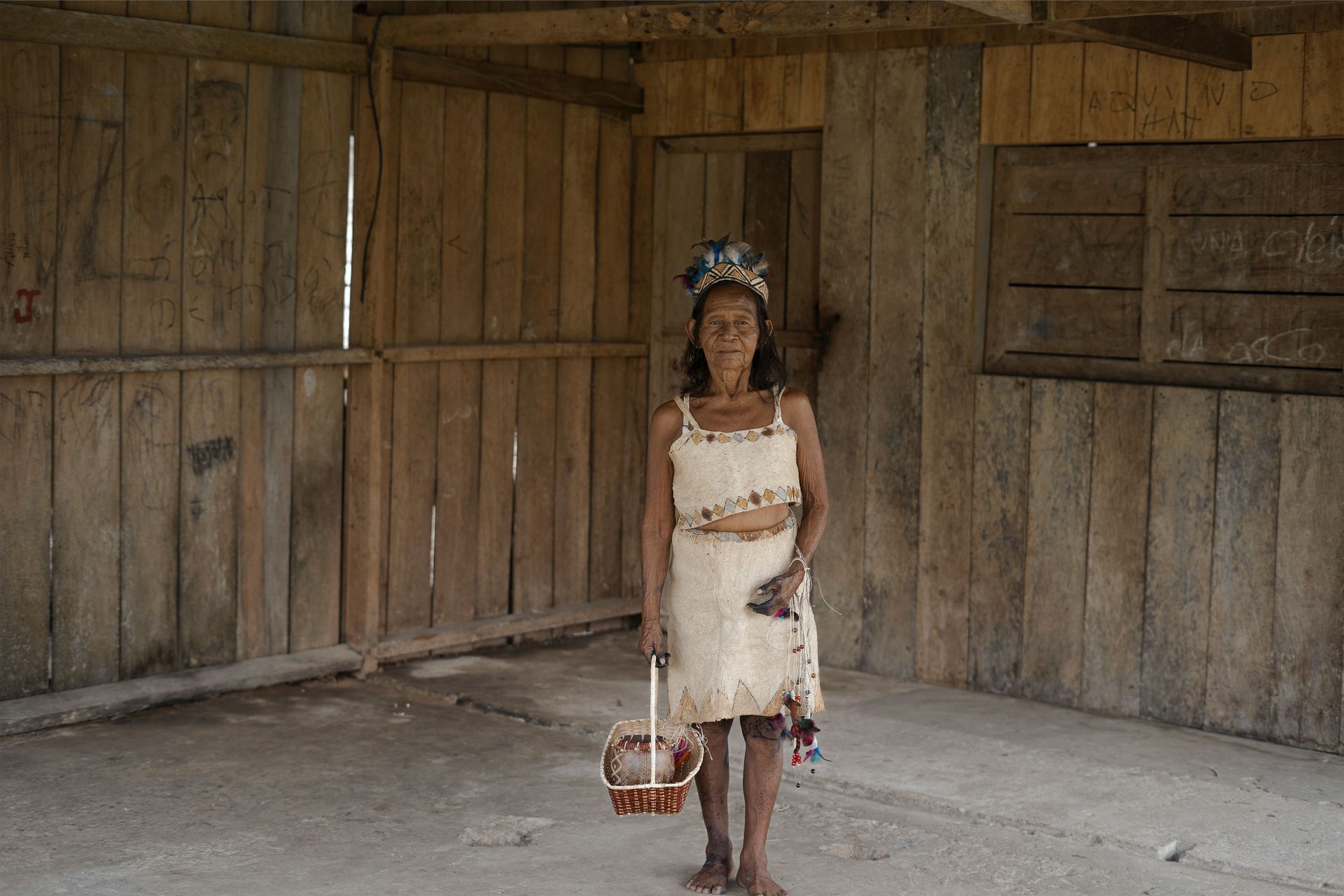
For the indigenous communities, the growth of the rubber industry was a devastating process. Many indigenous peoples were physically and spiritually exterminated; others like the Uitoto, survive today, but the memories of the atrocities they endured remain, like a festering wound, in the individual and collective memory.
An Open Wound at the Heart of the Colombian Amazon
María Clemencia Herrera Nemerayema is 57 years old. She is a knowledge keeper of the rainforest and a spiritual leader of the Uitoto people. Brown skin, with a sad face like the color of the earth after a storm, her black eyes are abyssal pools in the light of the fire. She knows the invisible spirits that live among the forests, because she has walked barefoot over the remains of fruit and rotting leaves from the trees, until she lost her way. She has been, since before she was 20, the voice of Indigenous Amazonian women to the world.
As she moves deeper into the rainforest, her sharp gaze passes from one plant to another and she remembers that her ancestors gathered herbs to heal the open wounds left by the whips during the Rubber Fever.
A Murui-Muina girl
“I was an extroverted child, but I didn’t know the history of the genocide. The survivors still don’t talk about it, but when they heard the sound of a boat, a motorboat or some device with a motor approaching the village, everyone hid and you could see the fear in people’s faces. I also didn’t know why I played with other kids counting the trees that had wounds, those trees that bled rubber,” says Clemencia, as she picks up a bunch of bromeliads hidden in the root of a giant palm tree.
When she turned 27 years old, she co-funded the School of Political Training of the National Organization of the Indigenous Peoples of the Colombian Amazon (OPIAC). Each year, they train dozens of young people to protect their territory, forming leaders oriented towards advocacy, political participation and the effective enjoyment of their individual and collective rights.
At a very young age, Clemencia advised the National Indigenous Organization of Colombia’s (ONIC) Confederation of the Upper Amazon, and was part of a delegation that succeeded in incorporating rights to the recognition of ethnic and cultural diversity of her country in the 1991 Political Constitution. A significant change in the participation of Indigenous Peoples as bearers of rights.
She also worked on the recuperation of the High Predio Putumayo reserve. A territory of almost 6 million hectares that during the rubber extraction was violently expropriated by the Peruvian Amazon Company, and other companies that imported rubber for supply in Europe.
The biggest rubber exploiter in the area was Julio César Arana. A Peruvian businessman and politician, who built in La Chorrera one of the main storage centers called La Casa Arana. The rubber was stored there and then transported to the ports of Iquitos, in Peru, and Manaos, in Brazil, to later follow the route to England where the production was sold. But the whole operation depended on the indigenous people: they were the ones who could walk in the rainforest without getting lost and whose ancestral practices permitted them to survive for a long time in hostile territories.
To break them, the rubber barons instituted a regime of terror that was especially violent against women. “Our territory is an open mass grave. The elders tell that in La Casa Arana they were forced to work grueling shifts, and if they didn’t meet the quotas the foremen imposed, the enslaved indigenous people were mutilated, tortured, imprisoned and burned alive. In addition, the women were raped and the malocas (traditional homes) burned with the children inside,” tells Clemencia with a fiery gaze as the fog falls sharply over the burning sky.
At the end of the XIX century, rubber production moved the global economy because it was used to manufacture everyday items such as tires. During those years, up to 95% of the rubber produced was taken out of this rainforest. The method of extraction gave it the nickname “the weeping tree,” because cuts were made in the trunk to obtain its milky, white sap. The scared cuts left by the rubber tappers are still visible today.
In the book The Dream of the Celt, a novel by Peruvian author Mario Vargas Llosa, there’s a fragment that relates how eight hundred Okainas arrived at La Chorrera to deliver baskets with the balls of rubber they had collected from the forest, but twenty-five of them had not brought the minimum quota they were forced to bring.
“The administrators decided to teach the savages a good lesson. Indicating to the overseers… to cover them in sacks soaked in gasoline. Then they set fire to them. Shrieking, transformed into human torches, some managed to put out the flames by rolling on the ground but were left with terrible burns. Those who threw themselves into the river like flaming meteors drowned,” described Vargas Llosa.
The indigenous people that today live in the Colombian rainforest are the descendants of the few people who managed to survive the extraction of “black gold,” as it was also called. Before the massacre, there were 100 thousand indigenous people in the Putumayo territory; after the oppression and barbarity, barley 64 people survived. Clemencia tells how in La Chorrera, only four houses were left standing. “One of those houses was my parents’. I’m the fourth generation of the children of the resistance,” she says proudly.
Women Displaced from the Rainforest
In 1998, the violence from the different armed groups in Colombia provoked the displacement of more than 300 thousand people. The civilian population was declared a military objective by all armed actors.
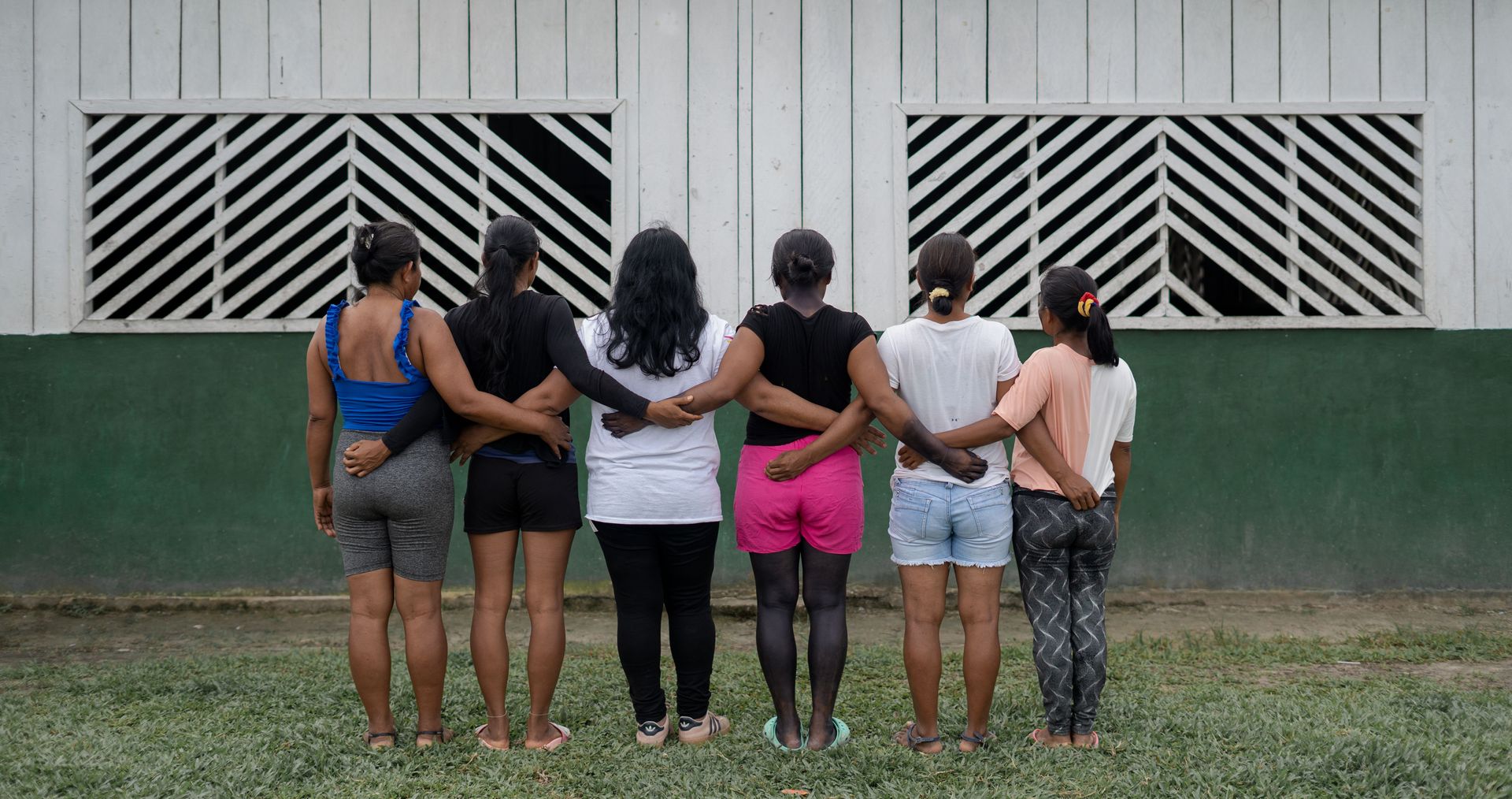
According to the data from the Consultancy for Human Rights and Displacement (CODHES), a civil society organization that centers its actions on the defense of human rights and international humanitarian law for the construction of lasting peace, in those years the paramilitaries were responsible for 67% of the total number of displaced people, 27% were attributed to the guerrilla forces and 7% to the armed forces.
The distinct armed groups harassed, threatened and murdered the civilian population. After every attack, harassment or massacre, the villagers fled to urban contexts, when faced with possibility of falling into the hands of paramilitaries, guerrilla forces or the army.
“One day in 2002 they almost killed me in a cross fire. They didn’t do it, so as not to leave my daughter an orphan, and although I never felt like a victim of the conflict, I understood that women and their children were especially vulnerable to this violence. Feeling their bonds as mothers, daughters, granddaughters or nieces of other women that survived the tortures of armed conflict, made me form Mutesa.”
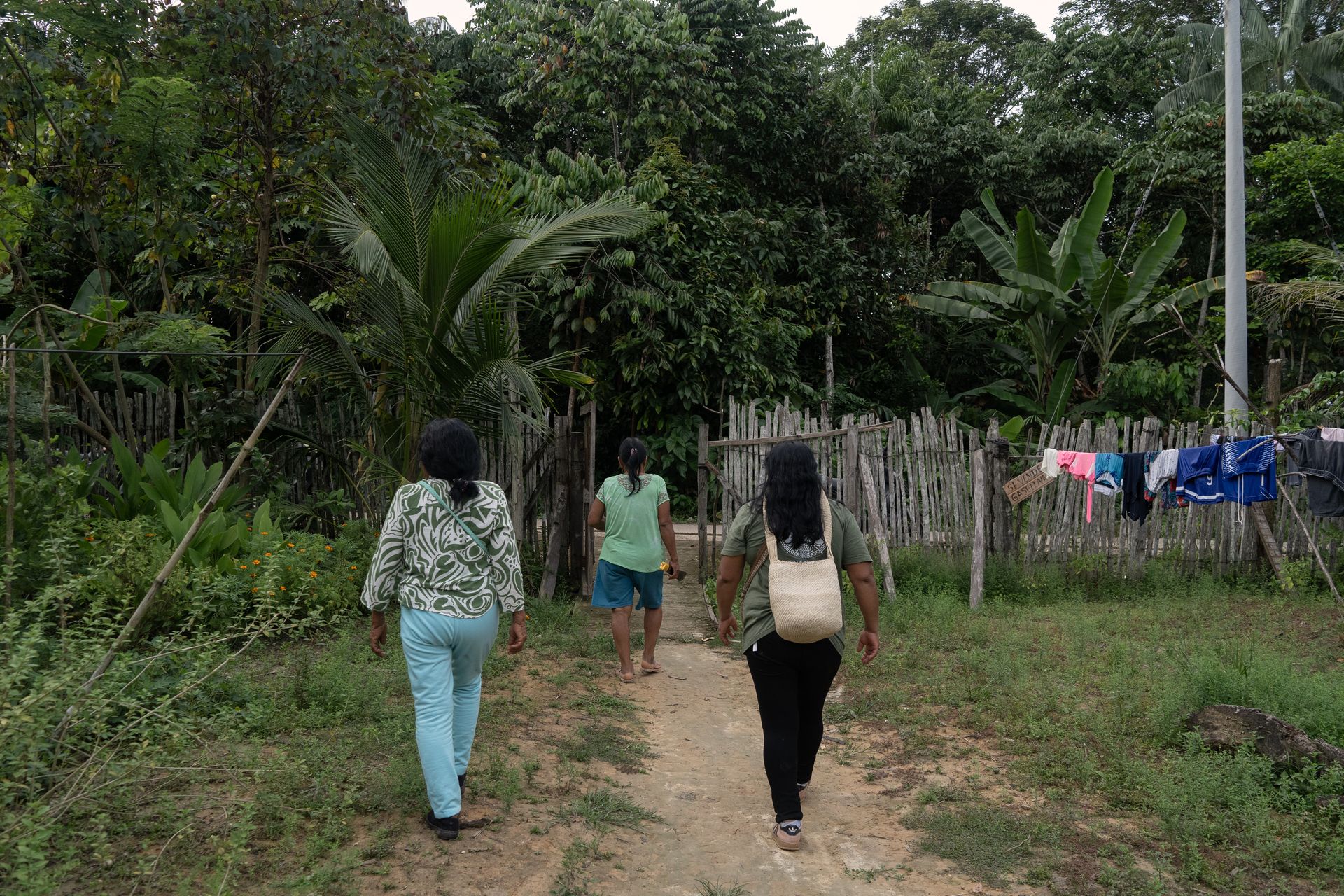
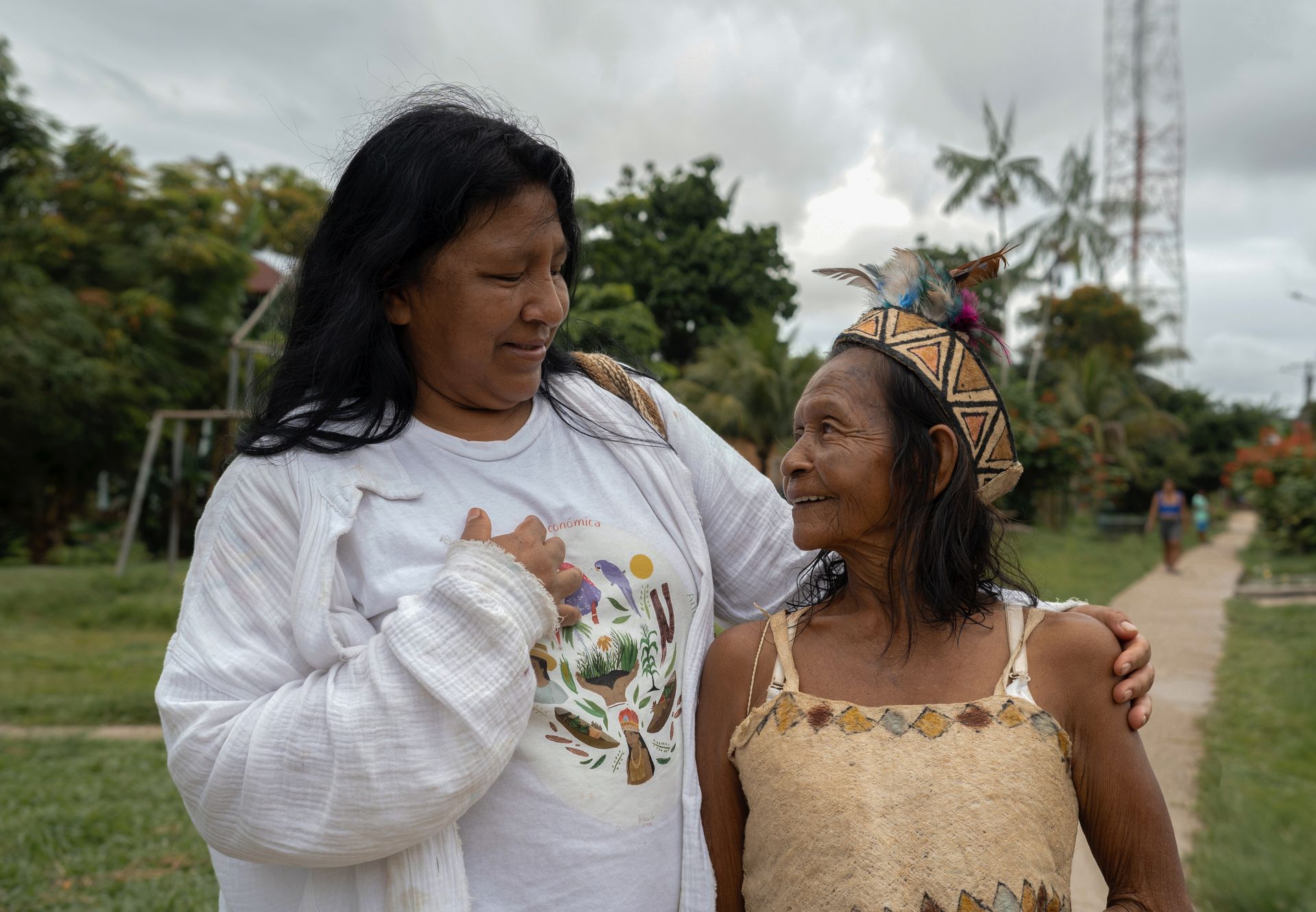
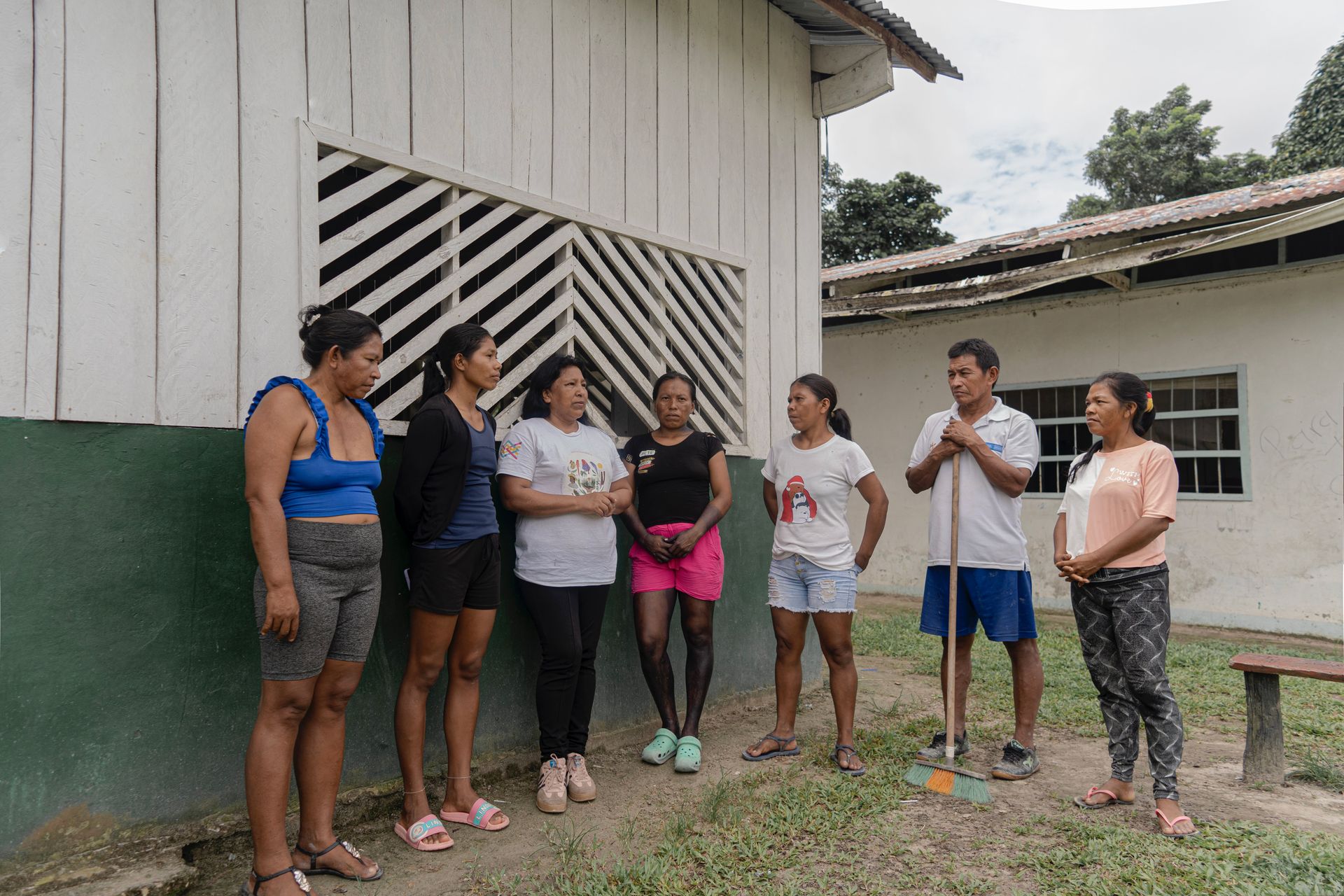
That’s how in 2004 the Corporación Cultural Ecológica Mujer, Tejer y Saberes (Mutesa) was born, to foster learning spaces and productive initiatives based on the knowledge and ancestral memory of indigenous peoples.
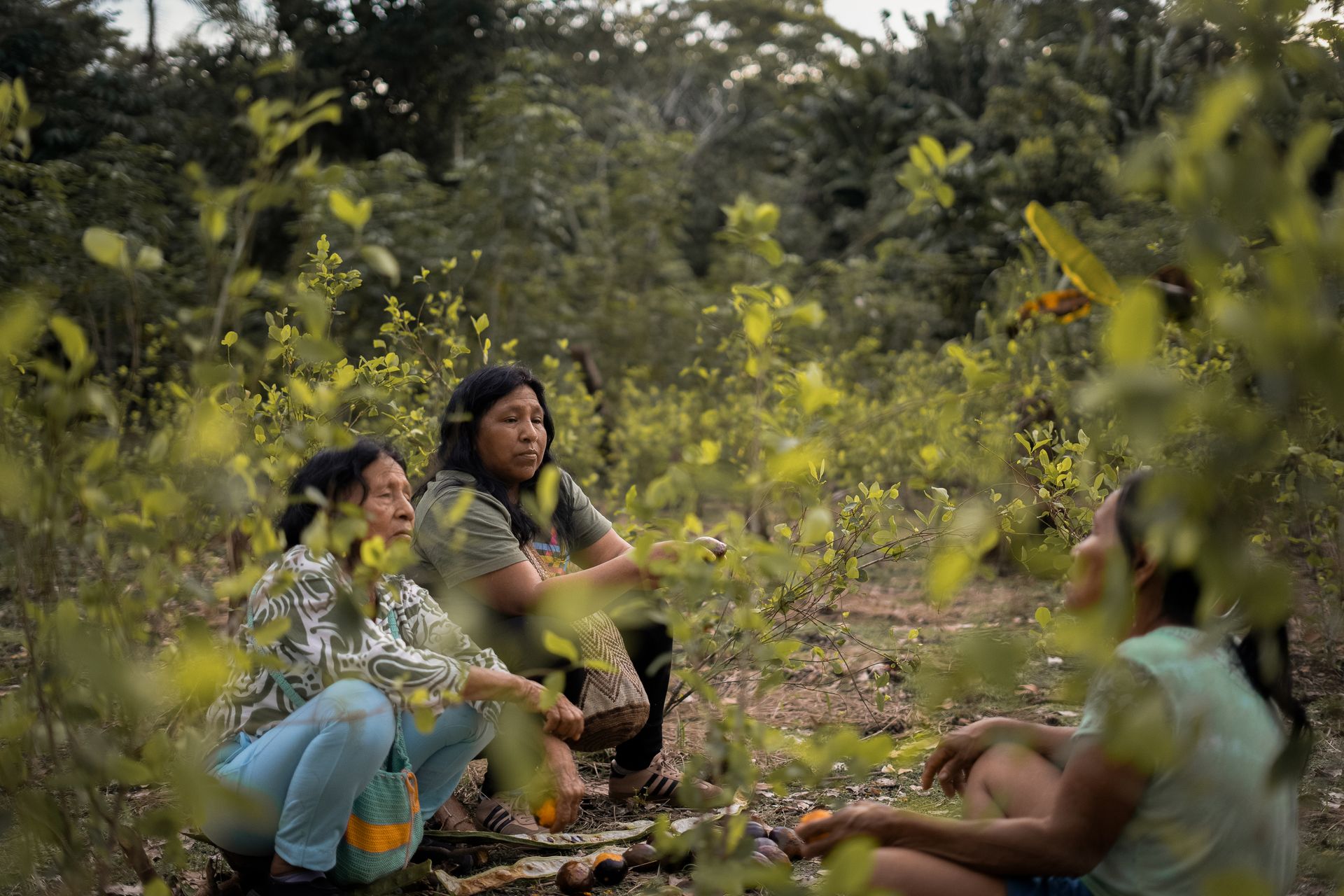
“I wanted displaced women living in Bogotá to be able to access better living conditions, but with limited schooling it was practically impossible until I built a space where they could finish their high school.” tells Clemencia with her gaze fixed on a far-off point on the Putumayo River.
Today this leader, expert in Indigenous peoples’ law from University Carlos III in Madrid, Spain, has accompanied more than 1,500 women from all over the Colombian Amazon. These women have decided to continue their studies and preserve their spiritual practices with specialties in health, education, political participation, climate change and extractivism.
Training and Transforming Amazonian Women
In the heart of a village located in Nazareth, amid the dense vegetation of the Colombian Amazon, there is a tiny soccer field and a gray church where women from the jungle gather for evening mass.
Through the project Strengthening Productive Entrepreneurship Initiatives of Indigenous Women in Colombia, funded by FIMI, Mutesa awarded grants to 10 groups of women who lead grassroots organizations. This funding, which has been vital for them, aims to promote and strengthen innovative, high-impact ventures for the sustainable development of productive projects in their communities.
To achieve this, Mutesa created the Copoazú restaurant, which preserves the culinary memory of indigenous women displaced by the armed conflict, generates income through the recovery of local traditions, and the sustainable use of amazonian resources.
“I wanted displaced women living in Bogotá to have access to better living conditions, but without education, it was practically impossible until I built a space where they could learn some trades and finish their high school diploma,” says Clemencia Herrera.
Since then, Mutesa has awarded scholarships to more than 1,500 women from throughout the Colombian Amazon who decided to continue their studies and preserve their spiritual practices, specializing in health, education, political participation, climate change, and extractivism. Through the FIMI-AYNI Women's Network, they have supported productive ventures, ensuring that Indigenous women continue to weave their history with autonomy and dignity.
Collective Healing
Nazareth was founded as an indigenous safe haven in 1945 by 15 Magütá families who arrived in the zone where the Pacuatua gorge merges with the Amazon River. Its inhabitants live in small, rustic wooden houses, surrounded by a green foliage that never ends.
In the heart of this hamlet is a tiny football field and a grey church where they celebrate mass in the afternoons. Seated under the carana palm roof of a maloca, Clemencia shelters from the relentless sun and humidity together with several women who follow her. Since she abandoned the ancestral territory of the Murui Muina people to establish herself in Bogotá, her presence in the Amazon communities is a lighthouse, a light that helps them survive between hostilities and the darkness of the rainforest.
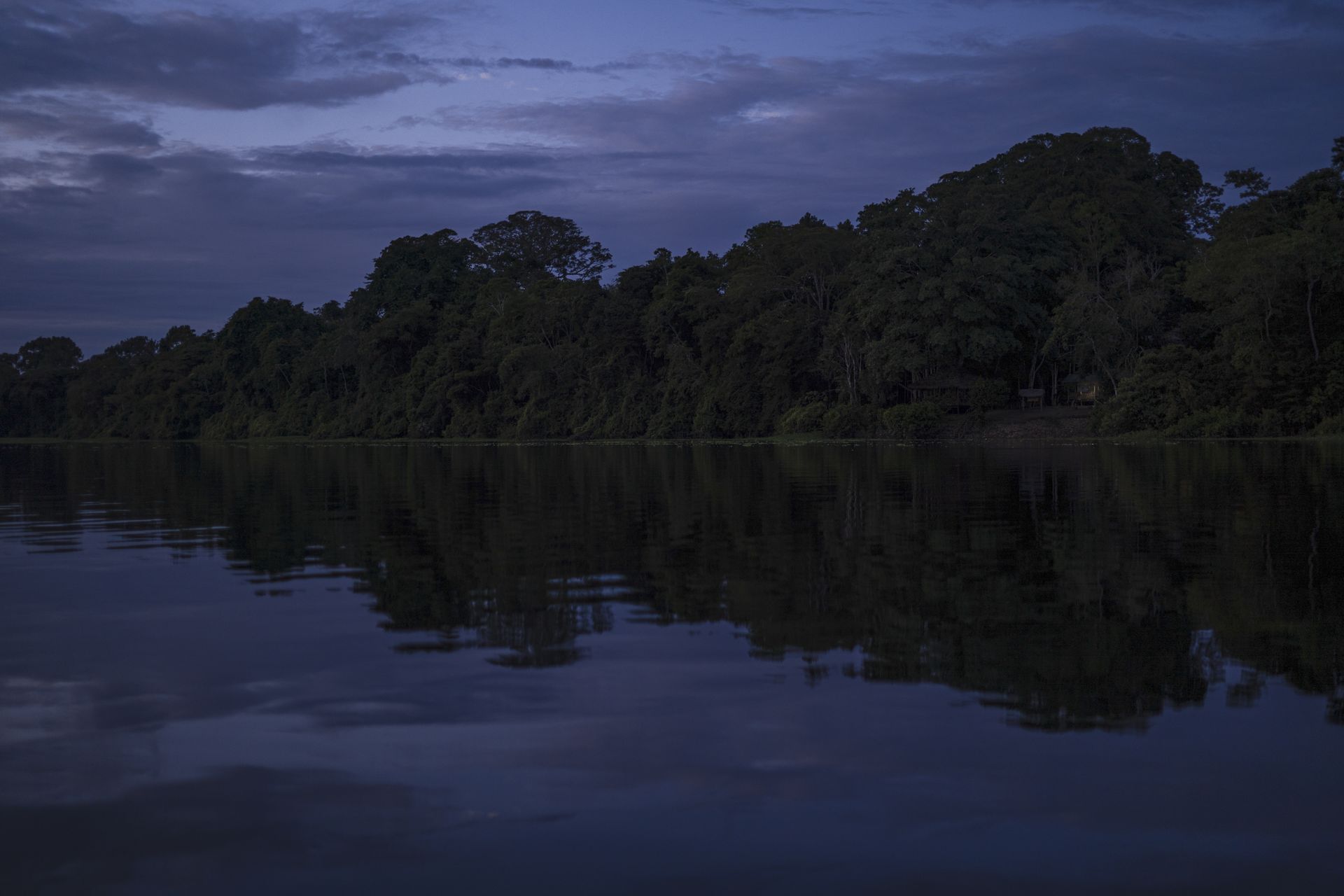
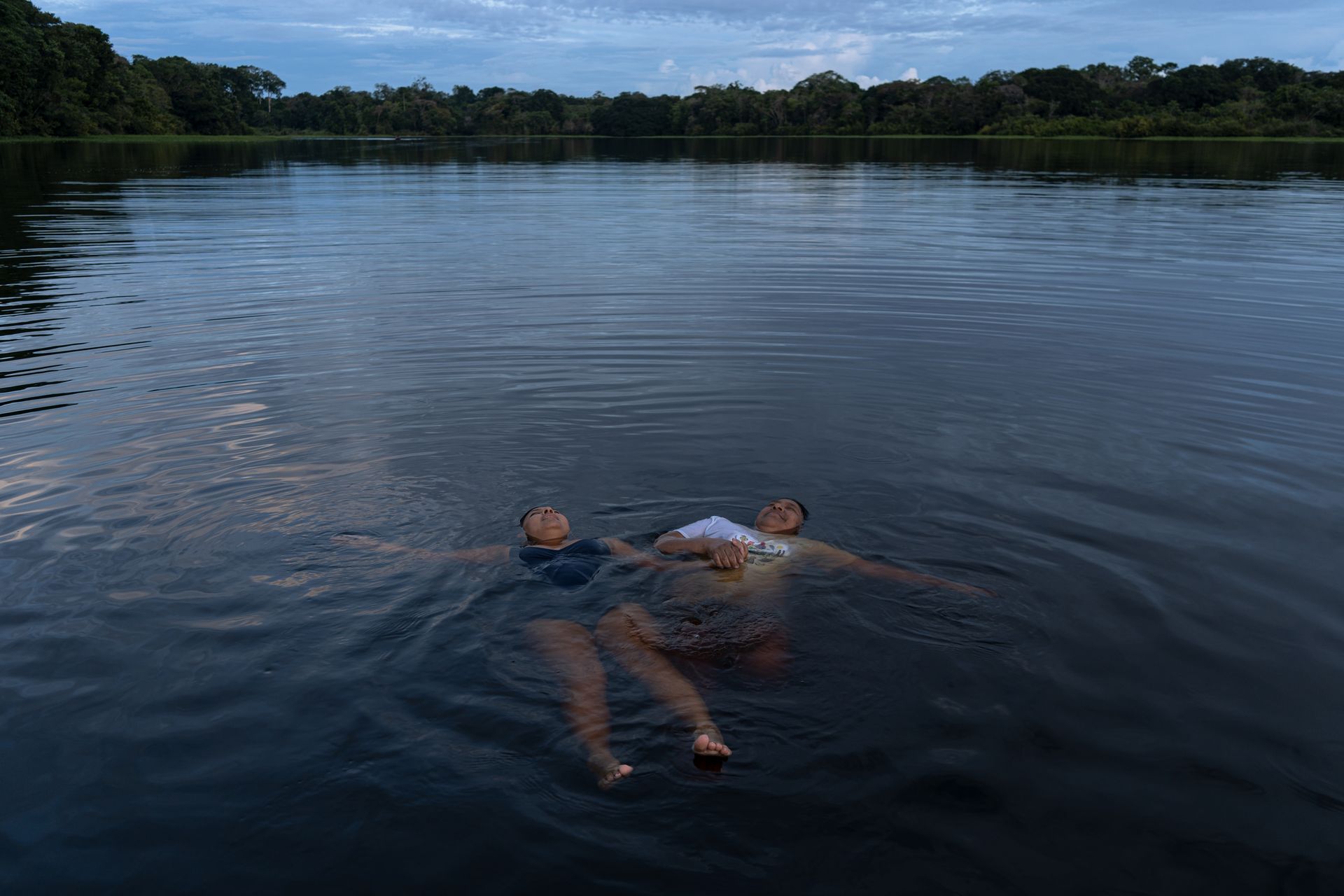
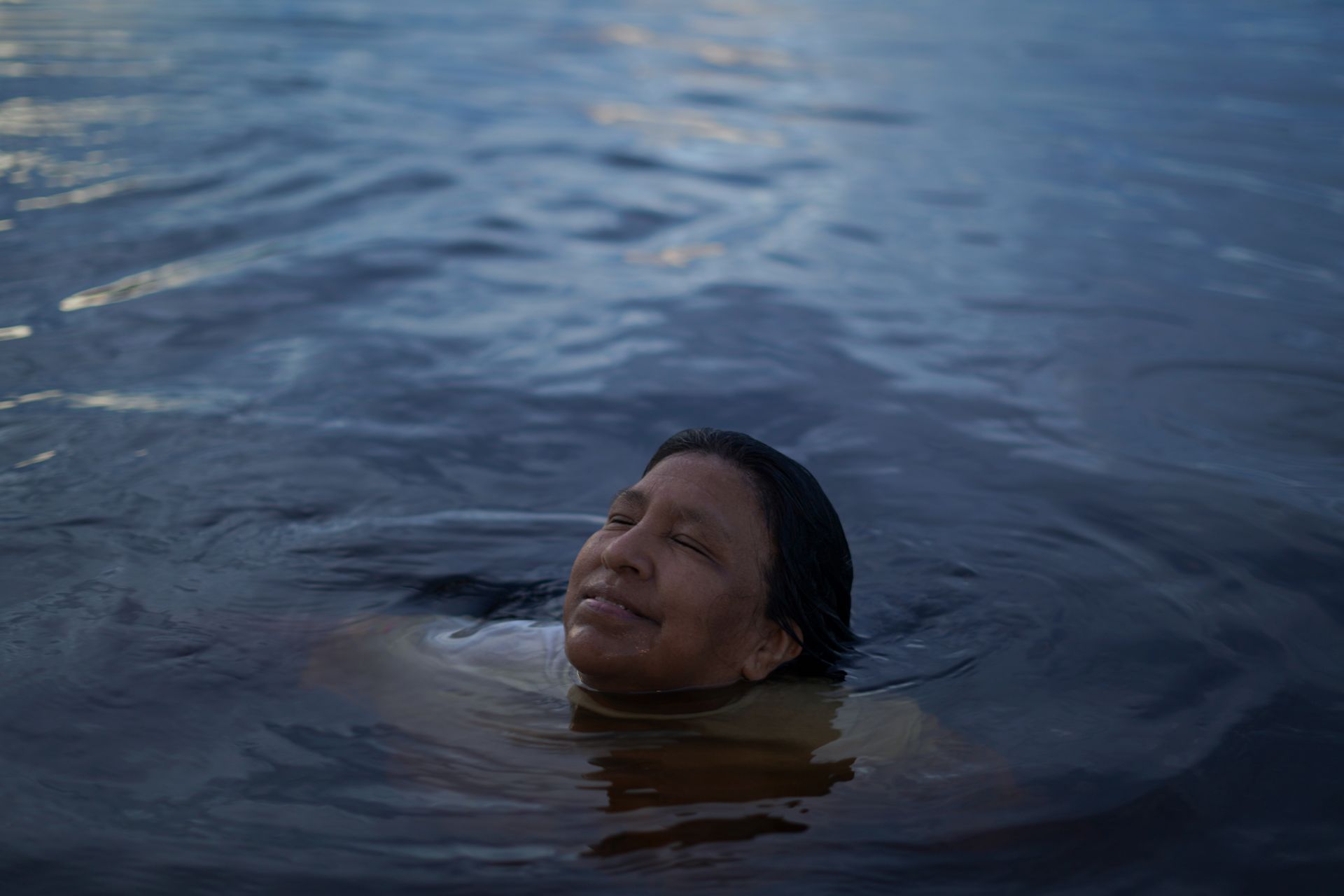
“Indigenous women suffer because they don’t have a dignified life. This territory has historically been abandoned by the State. Food, education, and health are precarious services, they almost don’t exist,” she says while the women climb a hill to reach one of the chagras.
La chagra is a family plantation that has guaranteed the inhabitants of the Amazon a varied and nutritious diet, medicine, fuel and construction materials. “This piece of land is important for the family to have a full belly. If there is hunger, there is violence”, laments Clemencia. At the top of the small hill, everyone agrees. In addition to institutional neglect, there are also other forms of violence such as alcoholism, drug addiction, the recruitment of young people for armed groups that control the zone and machismso.
In Nazareth, as with other remote Amazonian villages, it is very common to see women abandoned with their malnourished children, “and every woman who is isolated or stripped of her chagra leaves a deep scar in the social fabric of the communities,” affirms Clemencia as the evening falls.
She doesn't know it at the time, but that night after the town’s patron saint festival a drunken man will threaten to beat his wife who will cry without rest until dawn. The next day, with the midday light at its peak, the women comfort each other, embrace each other and organize themselves.
They are there because thanks to the support of Mutesa and the financing of organizations such as the International Indigenous Women’s Forum (FIMI). Today they have access to education, the possibility to develop productive projects that permit them to become economically independent, explore and strengthen their leadership to face machista violence, discrimination or pain and eliminate geographical, connectivity or digital barriers.
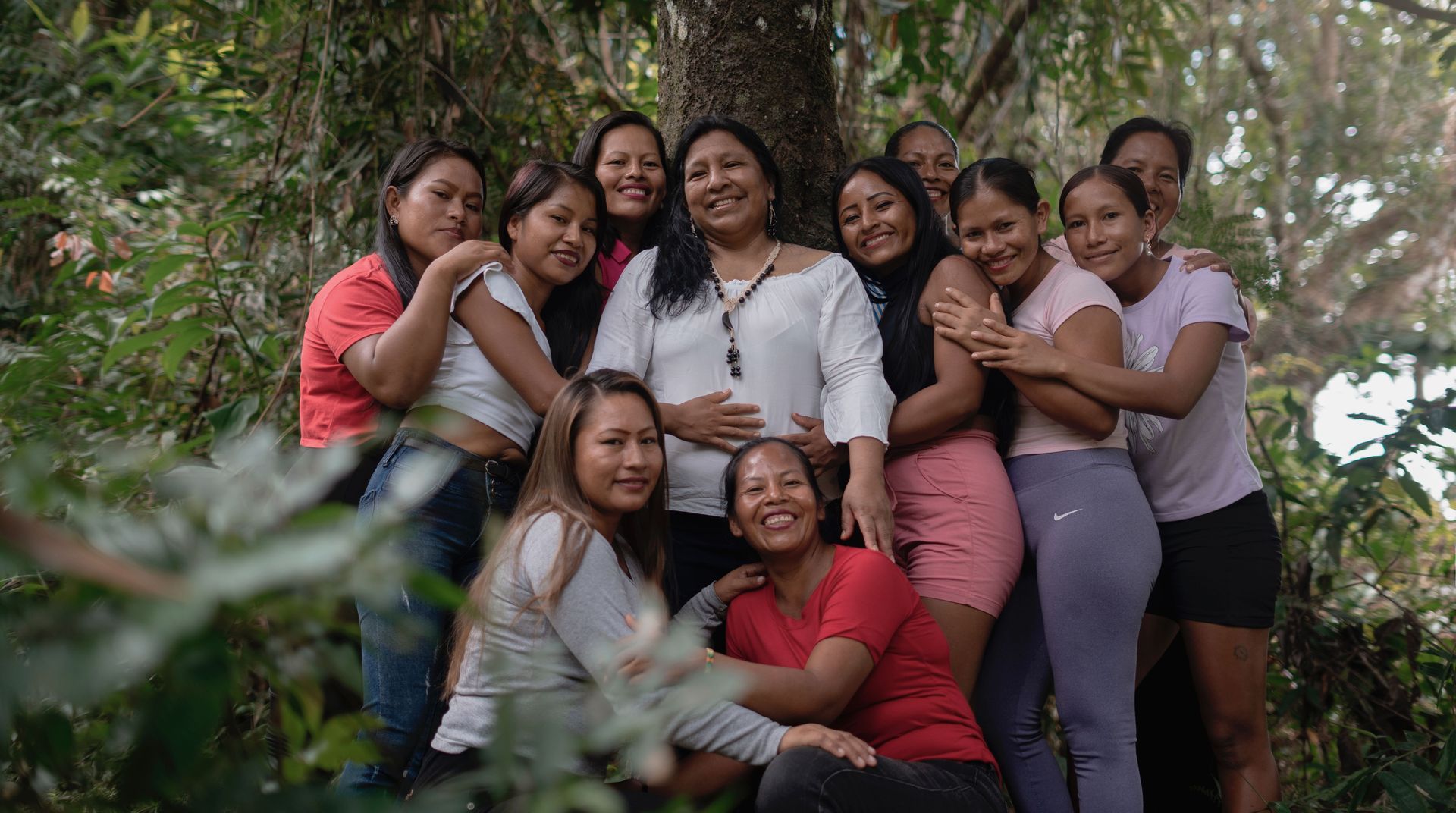
Before returning downriver, Clemencia says goodbye. With a long group hug the women seal the promise to get together again. “We indigenous women want to break paradigms, we want to see more women participating in spaces of political life, we want everyone to know that we can dream and profoundly transform our lives.”
Clemencia’s boat slowly sets sail for home. Despite the fear, in the deepest and most remote part of the Colombian Amazon, dawn breaks every day.
